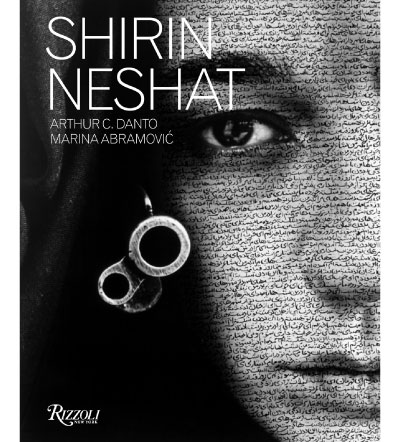
courtesy of Rizzoli Books USA
Shirin Neshat, the Iranian-American visual artist, has had an exiguous but rewarding career. Her body of work, mostly engaging the position of women vis-à-vis Islam, is scant but forceful. The new book, Shirin Neshat (Rizzoli, $75), is an ambitious effort to gather her art under one roof. The 272-page volume documents all of Neshat’s projects with photographs and stills from her videos and her first feature film, Women Without Men.
Neshat’s first undertaking, a series of photograph’s called The Women of Allah, remains her most poignant work. The photos depict Iranian women shrouded in veils and holding guns. Farsi poetry, including songs about martyrdom and sexual longing, is inscribed on their faces, hands, and feet. From Neshat, whose work is banned in Iran, one would expect a pointed critique of Islamist extremism, but the viewer doesn’t quite get that. The women don’t look like victims.
The rest of Neshat’s work is less ambivalent. The book is full of stills from her videos depicting separation of sexes and limitations of women’s personal freedom. The book culminates with stills from Women Without Men. The film deals with oppression of women in Iran. It is based on the eponymous novel by Shahrnush Parsipur, about four women who are betrayed by the society in which they live. The photos in the book succeed in freezing the characters’ complex emotions and revealing their suffering. These silent and abandoned women surely find a sympathetic voice in Neshat, whose work remains urgent and charged.




 Facebook
Facebook Permalink
Permalink Digg
Digg Reddit
Reddit LinkedIn
LinkedIn StumbleUpon
StumbleUpon Tumblr
Tumblr

